Pakistan has been approaching International Monitoring Fund (IMF), intermittently, since 1988. The last programme was successfully completed during the period 2013-16. However, within a short period of time we are back to a situation where without seeking Fund’s support the country may be facing a risk of default.
Given this almost predictable cycle of seeking IMF support, it is natural to inquire what ails the economy of Pakistan that routinely requires outside help on regular intervals. Why so many of the Fund programmes were aborted midway or, when significantly implemented, have failed to achieve the desired results. Are there policy prescriptions which, if adopted, would rid the country from the need to approach the Fund on a permanent basis.
In this piece, we attempt to give an answer to this fundamental question.
How it started
Toward the close of the military government (1977-1988), the end of Afghan War was nigh and the US and western financial support to Pakistan was waning. Indeed, a new world order was unfolding, characterized by globalization – with its primary manifestation in the form of free movement of private capital and end of official flows – free trade and loosening of government controls on infrastructure investments, opening them for private investment.

The inexorable wave would affect Pakistan in three important ways: (i) seeking capital from multilateral institutions to sustain future growth; (ii) move-away from industrial development under the high-walls of tariffs and rationalise the taxation system with equity between local production and imports; and (iii) allow private investment in sectors that were hitherto the preserve of the public sector.
These three aspects represent the main directions in which the economy of Pakistan has evolved in the last three decades. Clearly, our journey has been moving in fits and starts and it has yet to attain a steady state where growth would occur without disruption.
We first give an informal account of each of the nodal points when it was decided to go to a Fund programme.
IMF Program: SAF 1988-91
The 1988 programme, known as Structural Adjustment Facility (SAF), was signed in October by the interim government of Ghulam Ishaq Khan, after the demise of General Ziaul Haq, and when the reserves were down to a precarious level of less than two weeks of imports. The first Benazir Bhutto government, formed in December, readily owned the programme and worked diligently for its success. However, she was out of office within 20 months.
The first Nawaz Sharif Government (November 1991- July ‘93) had its own ideas about liberalisation of economy but was not concerned too much about the programme type of discipline. Consequently, it abandoned the programme discipline, and the programme was terminated without completion. The liberal policies continued through the term of the government but they caused serious imbalances in fiscal and external accounts.
Consequently, in early April 1993, the finance minister Mr Sartaj Aziz, invited a Fund mission for a new programme as reserves were hovering around a dangerous level. On April 18, the government was sacked by the president and an Interim one was formed under Mr Balakh Sher Mazari. Mr Farooq Leghari, as the finance minister, continued to hold the negotiations with the Fund. On May 27, the Nawaz government was restored by the Supreme Court, without stemming the political instability. It finally culminated in the resignation of both the president and the prime minister.

IMF Program: ESAF 1993-96 and SBA 1995
The resignations led to the formation of yet another interim government led by Mr Mueen Qureshi. This interim government finalised a highly ambitious three-year extended structural adjustment facility (ESAF) program with the Fund.
Curiously, the second Benazir Government again owned the ESAF and worked for its success. However, in June 1995, it abandoned the programme as it found structural conditions (relating to the expansion of GST) too difficult to follow. Soon, thereafter, the imbalances again started emerging and rose to a point that in November 1995, the government had to rush to the Fund for a stand-by programme (SBA). On its conclusion in October 1996, a Fund mission negotiated another ESAF. Mr Naveed Qamar, who was appointed finance minister replacing Mr Vaseem Jafry who was the advisor to the PM on Finance, announced the agreement with the head of the mission on October 28. However, the die was cast against the government, as it was sacked by the president on the night of 4-5 November 4-5 , 1996. Incidentally, Mr. Abbas Mirakhor, Pakistan’s executive director in the IMF was sitting with the prime minister when she was informed that her government had been sacked.
IMF Program: ESAF 1996-99
Unlike in his first term, the second Nawaz government took a more serious view of the Fund programme and adopted the ESAF negotiated by the outgoing government. However, it was abandoned soon thereafter. In 1998 Pakistan conducted nuclear tests which led to economic sanctions. The economic situation then became very precarious. The government decided to follow a course of economic self-reliance and not seek any further assistance from the development partners.
But then in August 1998, the US fired cruise missiles into Afghanistan passing through Pakistan. This led to the revival of Pak-US friendship and the process to restart the Fund programme was initiated. Senator Ishaq Dar was appointed finance minister, and he succeeded in getting the revival of the stalled ESAF. The Paris Club rescheduling was also allowed alongside the private creditors of London Club. However, before the work would start on implementation of the programme and funds would be disbursed, another change took place.
IMF Program: SBA 2000
There was yet another change in the government with the military takeover of the country in October 1999. Initially, the multilaterals, just like many western capitals, were not supportive of the military government and for nearly one year no meaningful assistance for stabilisation was provided by them. In November 2000, the IMF agreed to provide a 10-month SBA. This was essentially a programme where a significant amount of conditionality was met upfront and the remaining conditions were also fulfilled.
IMF Program: PRFG 2001-04
After 9/11, things eased up greatly as considerable foreign resources started flowing into the country. In November 2001, the Fund approved a three-year poverty reduction growth facility (PRGF), which put the country on the path of stability and growth. Support from the World Bank, Asian Development Bank and other multilaterals such as USAID and DFID also started flowing. The programme turned out to be the longest running, as Pakistan succeeded in completing 10 reviews under it. With rising foreign exchange reserves, the country was in great shape and the Fund was also keen to use its PRGF resources elsewhere. Accordingly, the last two reviews were cancelled with mutual understanding and disbursement were also not made.

The PRGF was considered the success of sustainable economic management, freeing the country from the future needs for the IMF programmes. Accelerating growth, price stability, rising investments and historic increase in reserves were the characteristics of the economy. Things were moving in this direction for a few years and Pakistan even started making prepayment of expensive loans.
But this process was interrupted when the then president deposed the chief justice and the process disturbed the serenity of the military rule. Around the same time, the global financial crisis also erupted leading to oil prices jumping up to $150/barrel. The political compulsions prevented the government from passing on the increased prices to consumers, consequently fiscal deficit went out of hand and pressures started building on foreign reserves. Elections were held in 2008 and a new government came to office, which removed the president, electing a new new one in his place.
IMF Program: 2008-2010
The ensuing political instability and continuing effects of financial crisis affected the economy comprehensively. Inflation touched 25%, exchange rate was depreciated by 25% and stock market crashed to a point that it was shut-down. Under the circumstances, the country was again pushed to seek a fresh IMF programme, and 23-month SBA was signed in November 2008.
The programme started well for two reviews and then it went off track. Two things led to its eventual failure. First, in June 2010 the major reform of the programme, namely consolidation of sales tax into an integrated general sales tax in VAT mode, was due. However, an important coalition partner of the government, MQM, left the government, leaving it in minority. The government failed to elicit necessary parliamentary support for the passage of the GST law. Second, the country was hit by unprecedented floods that led to significant displacement of populations and imposed major relief and rehabilitation costs.
After the failure of SBA 2008, there was no further program during the tenure of the PPP government. However, SBA 2008 was a very generous programme as it disbursed heavily at the time of signing. At the end of June 2011, the country had reserves of more than $18 billion, highest ever until then. Yet for the next two years, these were brought down to barely $6 billion (SBP).

IMF Program: 2013-16
Post-2013 elections, for the new government in office by PML-N under Mr Nawaz Sharif, there was no escaping for a new IMF programme, which was quickly negotiated. It was a three-year extended fund facility (EFF) with disbursements distributed equally across the period.
The programme was successfully concluded with all 12 reviews completed. But unfortunately, the economic management again slipped into indiscipline and inaction. It is only a matter of time before the country would be rushing to the Fund for a new programme as reserves are in a free fall and exchange rate has lost its synthetic stability.
The curious thing this time would be a relatively buoyant economy growing at a rising growth rate, price stability, high investments and strong consumers’ spending. Yet, policy failures are threatening to undermine this scenario.
Conclusion:
Economic instability that leads to seeking IMF programme emanates from the fiscal deficit that leads to current account deficit that in turn poses the need for foreign resources beyond what is available through foreign investment and loans from other sources.
Financing the current account deficit from reserves is a clear signal that economy is heading for a situation of default.
The rising fiscal deficit is the symptom of both the failure of taxation system to generate the required funds as well as government’s inability to reign in its expenditures within the available resources.
The difficulties in implementing structural benchmarks agreed in the programme were not fully assessed with the result that these were aborted after failure to implement them. This is responsible for not building an economy that has sufficient leverage to ward-off crisis.
It is not infrequent that the Fund imposes unrealistic conditionality and shows inflexibility in modifying it based on mutual consultation. Often the mission would tend to discount the difficulties inherent in implementing structural policies. In this sense, the Fund has to share jointly the responsibility of programme’s failure.
It has also been the case that the programmes were sought at a time when major events were affecting the country and economy. At least, one sees a pattern that the change of government is a point when a programme becomes inevitable. However, there have been occasions, especially in the 1990s when a programme spilled over into the tenure of another government, which did not own it.
Disruptive world events, such as the global financial crisis, were also responsible for approaching the Fund. But such occasions are faced by other countries as well and as such contingencies of this type do not affect a country’s reputation.
The ownership of the programme has been lacking as economic managers were not sufficiently concerned with the need for developing a sustainable economy. When facing dire needs, managers are ready to accept all conditions and even implement if disbursements are withheld but as soon as such exigencies are eased, they return to their familiar ways of managing the economy.
The leadership has to understand that they don’t have unlimited resources to spend, even if in the domestic currency, because that also inevitably leads to external account imbalance. Unless this tendency is curbed, our drift towards the IMF yatra at regular intervals would continue like a business cycle.





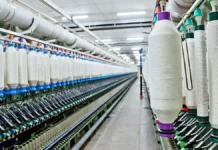






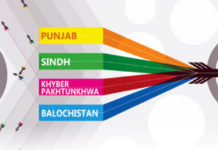






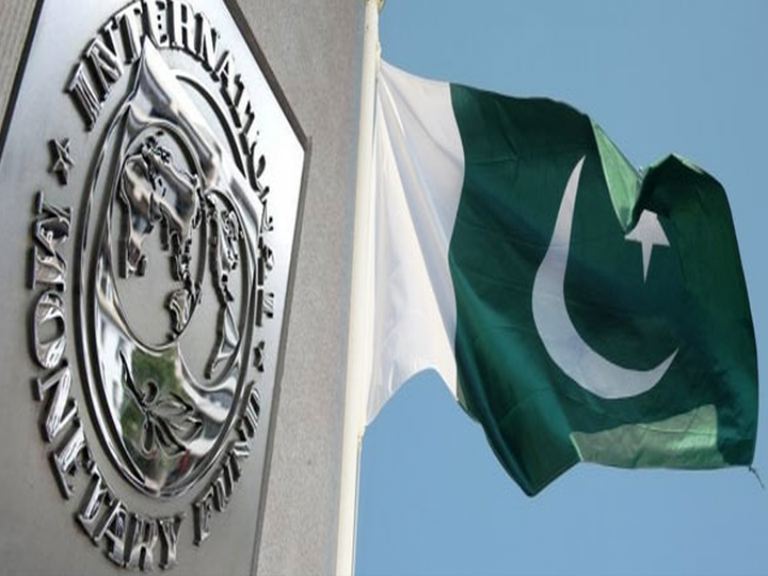
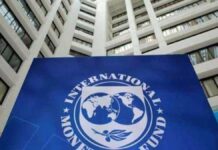

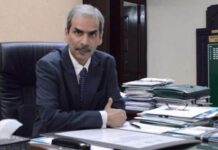
Excellent Openion.Dr WAQAR Mask of is a best Economist and If Pakistani Governament place him in proper position Like Regulator of SON or any other Econmy based institution.
NAWAB SHAH KAKAR. CAR,S PAKWHEELS.. NAWAB .2013: 2014: 2015: 2016: 2017: 2018: CARS: BMW :8:: CARS: :PAKWHEELS ::03341368664
very attractive article good work keep it up
[…] Tribune, Profit, DW, Business Recorder, Criterion Quarterly, IMF, The […]
Comments are closed.